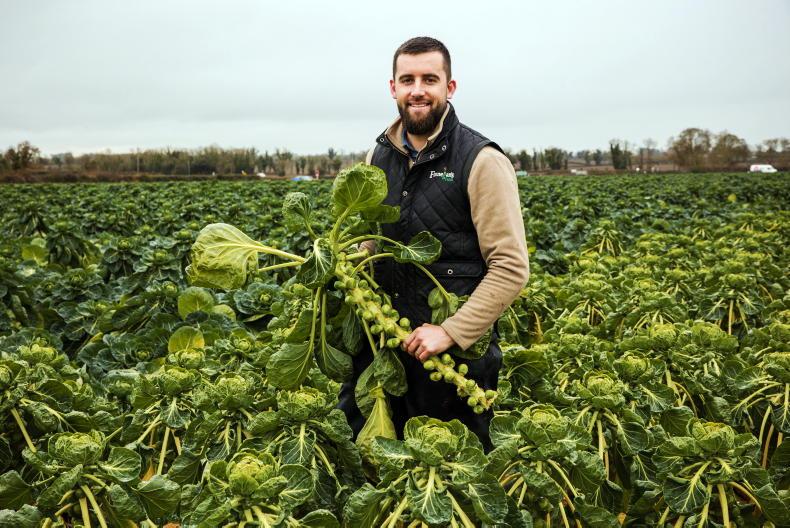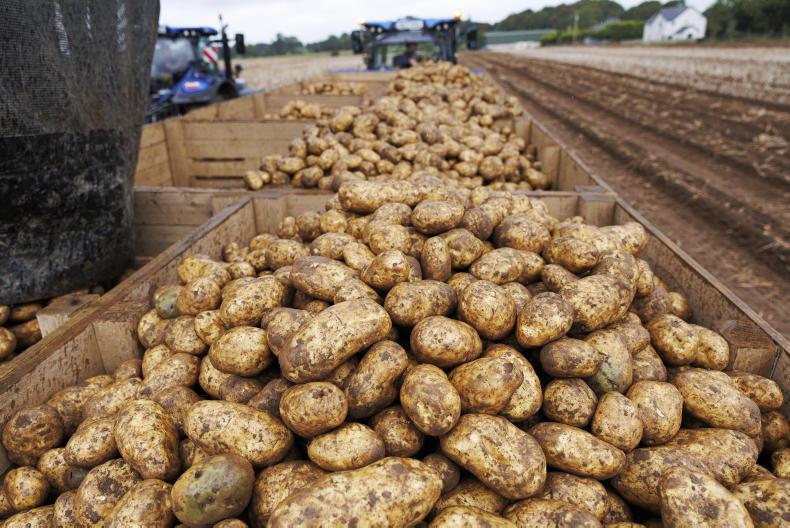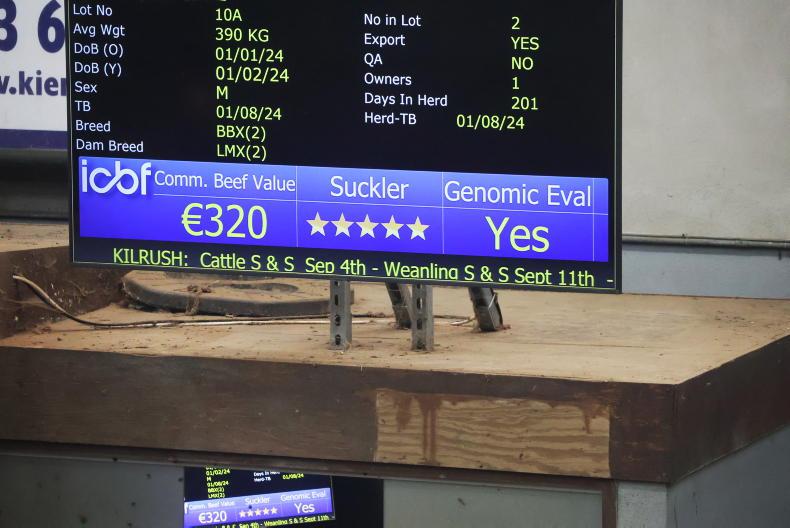Like many in the horticultural sector, potato farmers are coming under increased pressure from rising energy costs. While some have locked into fixed-price contracts which will soon be up for renewal, others face increased energy costs as they come.
Where crops are being stored on farm, potato farmers’ energy use is driven largely by refrigeration in cold stores.
Peak electricity loads can vary depending on the frequency and timing of opening and closing of cold stores, which result in refrigeration compressors coming online.
This example looks at a potato farm with four cold stores, a storage shed, office building, processing/sorting facility and packing facility. The site processes on average 10,000t of potatoes and turnips each year.
Of this, around 8,000t of the potatoes and turnips are in cold storage from September to July at temperatures of around 3oC. The key assumptions are below.
Assumptions
Annual electricity use: 464,000kWh. Day rate for electricity: 0.25c/kWh, night rate electricity is 0.15c/kWh.Annual electricity bill: €116,000 plus VAT.Main uses: refrigerating (67%), motors (20%) lighting (11%), miscellaneous (2%) .Area of roof space available for solar PV: 1,300m2.ESB connection: three-phase. Maximum import capacity: 100kVA.Location of transformer: within 50m.Battery storage: not suitable. ACA: 100%.Solar PV system
The potato stores have relatively consistent electricity demand during the storage months but it drops off during the summer, when solar generation is at its highest.
This load profile informed the size of the solar PV system installed.
For this scenario, a 125kWp (ie the peak output of a solar PV system) was selected. This would require around 938m2 of roof space and needs planning permission. The maximum import capacity of the site is 100kVA, which would be in line with a farm of this size.
As this farmer is storing crops for most of the year, electricity demand remains relatively high over the course of the year.
The system was sized so that all of the energy generated is used on site. As a result, no battery storage or export grid connection is required.
Possible funding options for a project of this kind include the Better Energy Communities grant (up to 25%) or EXEED funding (up to 40%)
This system would cost around €132,000 plus VAT and generate around 105,000kWh of electricity each year. It would offset around 33% of the farm’s electricity requirement.
Possible funding options for a project of this kind include the Better Energy Communities grant (up to 25%) or EXEED funding (up to 40%).
EXEED is a possible funding route for potato farms based on the opportunity for further upgrades on motors, refrigeration and lighting.
Carbon reduction volumes will be the deciding factor in applications.
125kWp payback
Utilising grant aid for this solar PV system has a big impact on the return on investment, ranging from three to 3.5 years. See Table 1. However, even without grant aid, this system is still an attractive proposition.
A larger system would be possible in this scenario but excess electricity would likely have to be exported to the grid.
The solar PV system generates 33% of the farm’s electricity requirements which, on this farm, would equate to a saving of €26,250 per annum.
VAT can be claimed back on the equipment in year one which equates to €18,596, while accelerated capital allowances could amount to a further €17,218.
Table 2 outlines the estimated 10 year financial projections of the system. As the cost of electricity rises, so to does the savings.
This system would offset 305t of CO2 on this farm over 10 years.
Like many in the horticultural sector, potato farmers are coming under increased pressure from rising energy costs. While some have locked into fixed-price contracts which will soon be up for renewal, others face increased energy costs as they come.
Where crops are being stored on farm, potato farmers’ energy use is driven largely by refrigeration in cold stores.
Peak electricity loads can vary depending on the frequency and timing of opening and closing of cold stores, which result in refrigeration compressors coming online.
This example looks at a potato farm with four cold stores, a storage shed, office building, processing/sorting facility and packing facility. The site processes on average 10,000t of potatoes and turnips each year.
Of this, around 8,000t of the potatoes and turnips are in cold storage from September to July at temperatures of around 3oC. The key assumptions are below.
Assumptions
Annual electricity use: 464,000kWh. Day rate for electricity: 0.25c/kWh, night rate electricity is 0.15c/kWh.Annual electricity bill: €116,000 plus VAT.Main uses: refrigerating (67%), motors (20%) lighting (11%), miscellaneous (2%) .Area of roof space available for solar PV: 1,300m2.ESB connection: three-phase. Maximum import capacity: 100kVA.Location of transformer: within 50m.Battery storage: not suitable. ACA: 100%.Solar PV system
The potato stores have relatively consistent electricity demand during the storage months but it drops off during the summer, when solar generation is at its highest.
This load profile informed the size of the solar PV system installed.
For this scenario, a 125kWp (ie the peak output of a solar PV system) was selected. This would require around 938m2 of roof space and needs planning permission. The maximum import capacity of the site is 100kVA, which would be in line with a farm of this size.
As this farmer is storing crops for most of the year, electricity demand remains relatively high over the course of the year.
The system was sized so that all of the energy generated is used on site. As a result, no battery storage or export grid connection is required.
Possible funding options for a project of this kind include the Better Energy Communities grant (up to 25%) or EXEED funding (up to 40%)
This system would cost around €132,000 plus VAT and generate around 105,000kWh of electricity each year. It would offset around 33% of the farm’s electricity requirement.
Possible funding options for a project of this kind include the Better Energy Communities grant (up to 25%) or EXEED funding (up to 40%).
EXEED is a possible funding route for potato farms based on the opportunity for further upgrades on motors, refrigeration and lighting.
Carbon reduction volumes will be the deciding factor in applications.
125kWp payback
Utilising grant aid for this solar PV system has a big impact on the return on investment, ranging from three to 3.5 years. See Table 1. However, even without grant aid, this system is still an attractive proposition.
A larger system would be possible in this scenario but excess electricity would likely have to be exported to the grid.
The solar PV system generates 33% of the farm’s electricity requirements which, on this farm, would equate to a saving of €26,250 per annum.
VAT can be claimed back on the equipment in year one which equates to €18,596, while accelerated capital allowances could amount to a further €17,218.
Table 2 outlines the estimated 10 year financial projections of the system. As the cost of electricity rises, so to does the savings.
This system would offset 305t of CO2 on this farm over 10 years.










SHARING OPTIONS